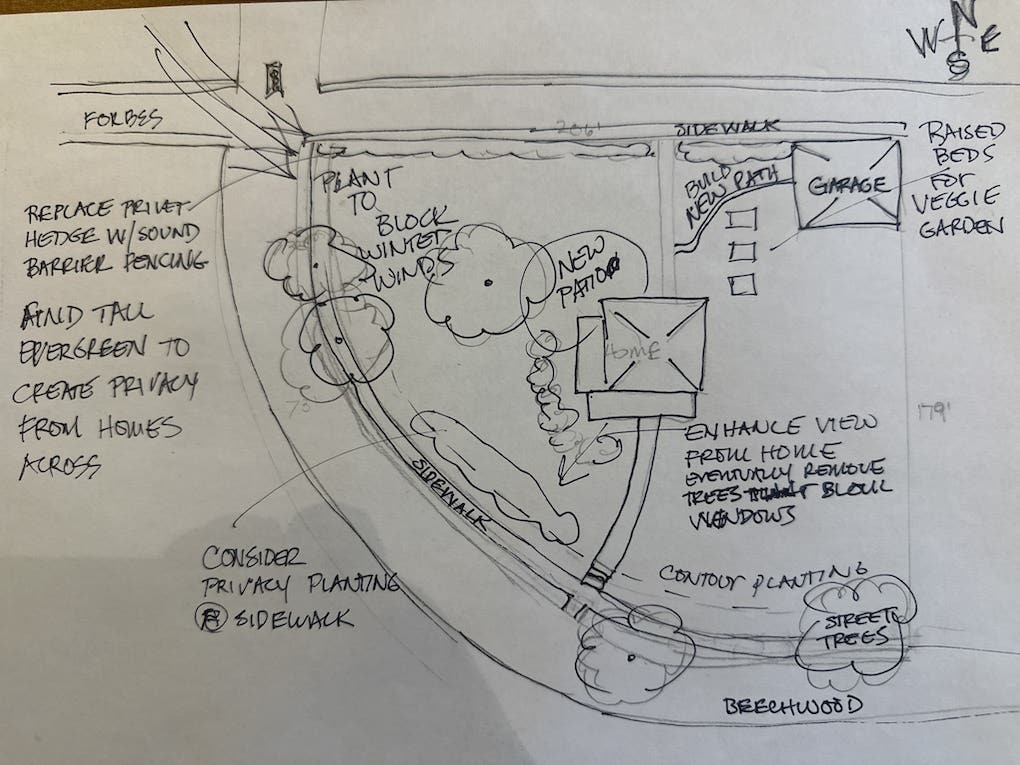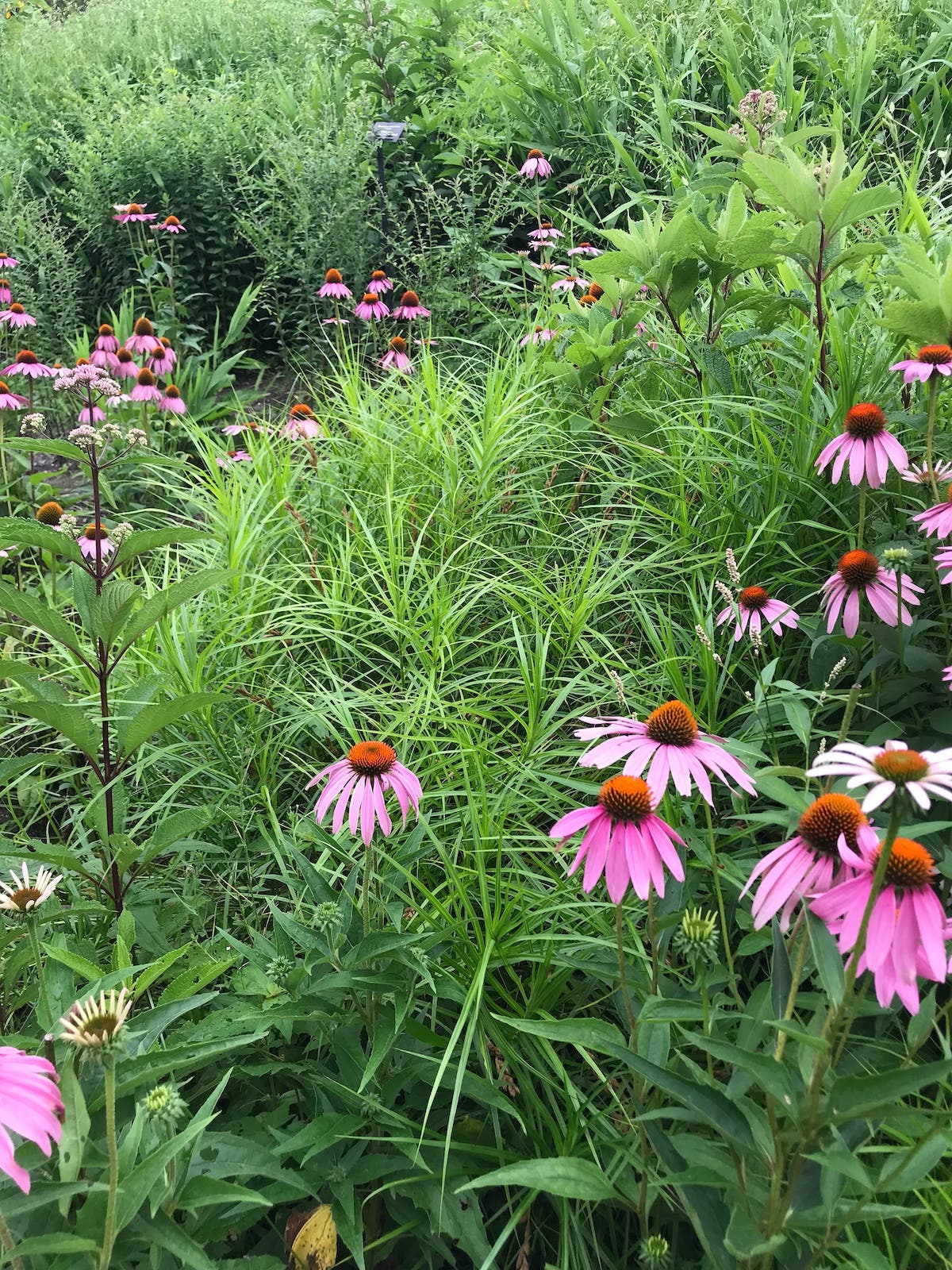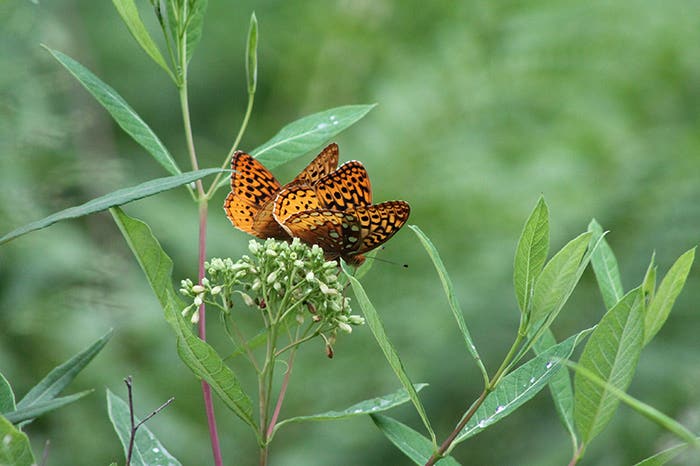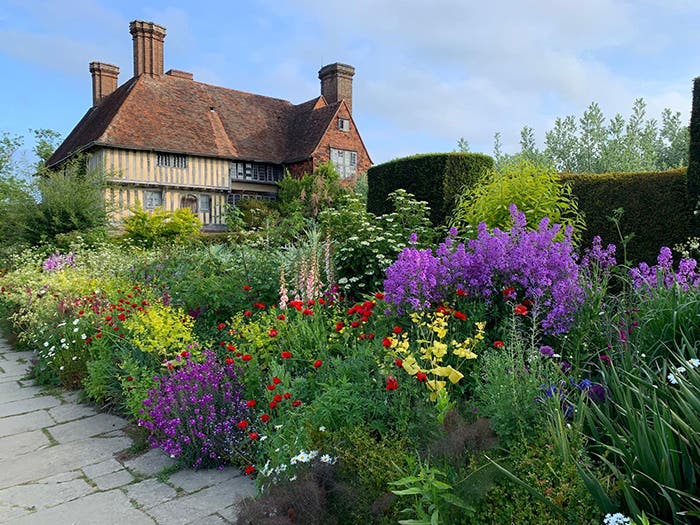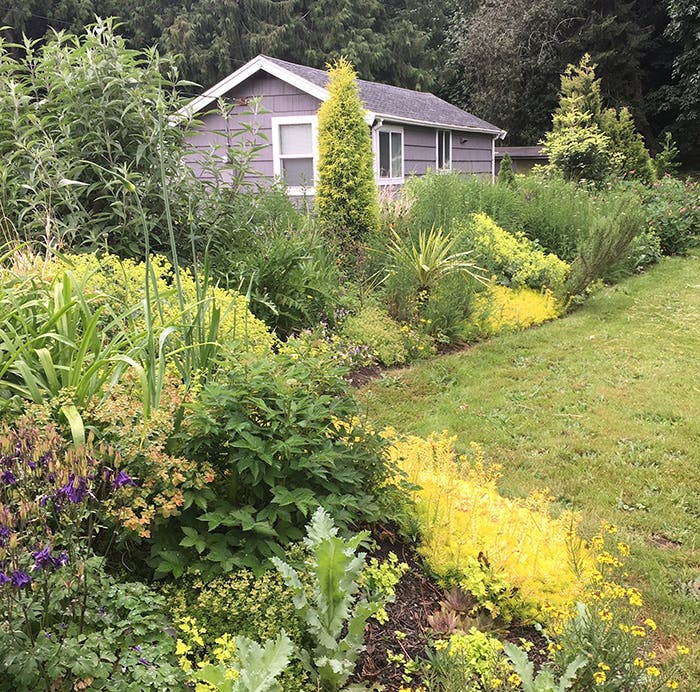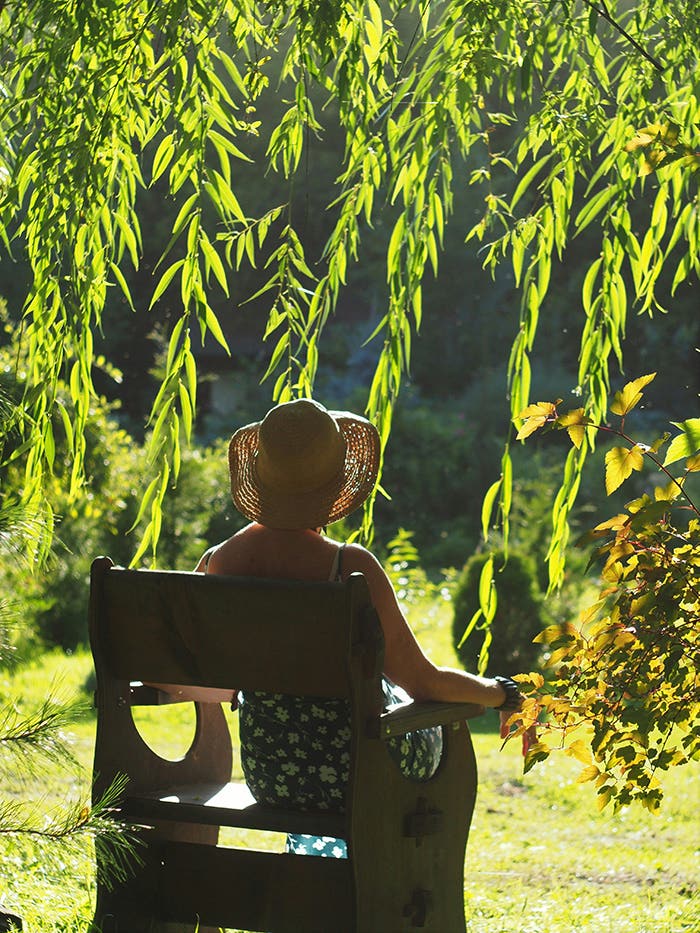How to Use Vase-Shaped Shrubs and Trees in Garden Design
Ideas for garden beds and pots too.
Woody plants come in many shapes, but perhaps the most versatile is the vase. Trees and shrubs with a narrow base and broad top fill several roles in formal and relaxed garden styles alike.
Columnar plants are the garden designer's go-to for punctuation, formal elements and vertical energy amid round or mounding plants. However, narrow vase shapes can do the same jobs with less stark contrast. Meanwhile broader vases can accent or take the place of round plants, providing the same softness but leaving room for dramatic combinations at their base. Here are 7 ways to use vase-shaped trees and shrubs:
1. In beds and borders where rounded shrubs and perennials dominate, the addition of a vase-shaped plant guards against monotony. In this patio planting, the background vase-shaped tree counters the rounded boxwoods and mounding plants:
2. The vase shape naturally lends itself to formal elements such as the allee, dual rows of like plants flanking a path. While an allee can employ columnar specimens, vase-shaped trees provide a softer feel and create more of a tunnel:
3. Columnar plants are often used to punctuate the garden, with placement at a gate, the start of a path or other key points. Vase-shaped trees and shrubs can serve this same purpose where a stiff silhouette isn’t desired.
4. Vase-shaped shrubs pair well with groundcovers, as seen in this sweep of astilbe dotted with several chokeberry shrubs. The mounding/spreading habit of the astilbe foliage works in good contrast to the chokeberry stems, which arch up and out at a height compatible with the showy astilbe flowers:
5. Large containers can suit small vase-shaped woody plants and provide several points of inspiration. The gardener might play up the form of a shrub by choosing a pot that flares sharply out at its edge—or one that remains straight from top to bottom. The shrub (shown, Bloomerang Purple lilac) can stand alone in the container, or easily host shorter companions:
6. Seasonality is an important consideration in garden design, with winter posing the greatest challenge. Arching trees and shrubs contribute great beauty to this season, when their bared stems accentuate their shape. Plants like this witch hazel (Hamamelis xintermedia cv.) offer a bonus of cold-season flowers:
7. A vase shape needn’t always be underplanted. Indeed, leaving the ground surrounding an elegant tree like this summer-blooming Temple of Bloom seven-son flower (Heptacodium micionoides) ensures that its form is appreciated. The shaggy bark covering its multiple trunks is a winter highlight, too:
Beautybush image by FD Richards/CC BY-SA 2.0; Astilbe image by cultivar413/CC BY 2.0; Witch hazel image by Megan Hansen/CC BY-SA 2.0; All other images courtesy of Proven Winners.


